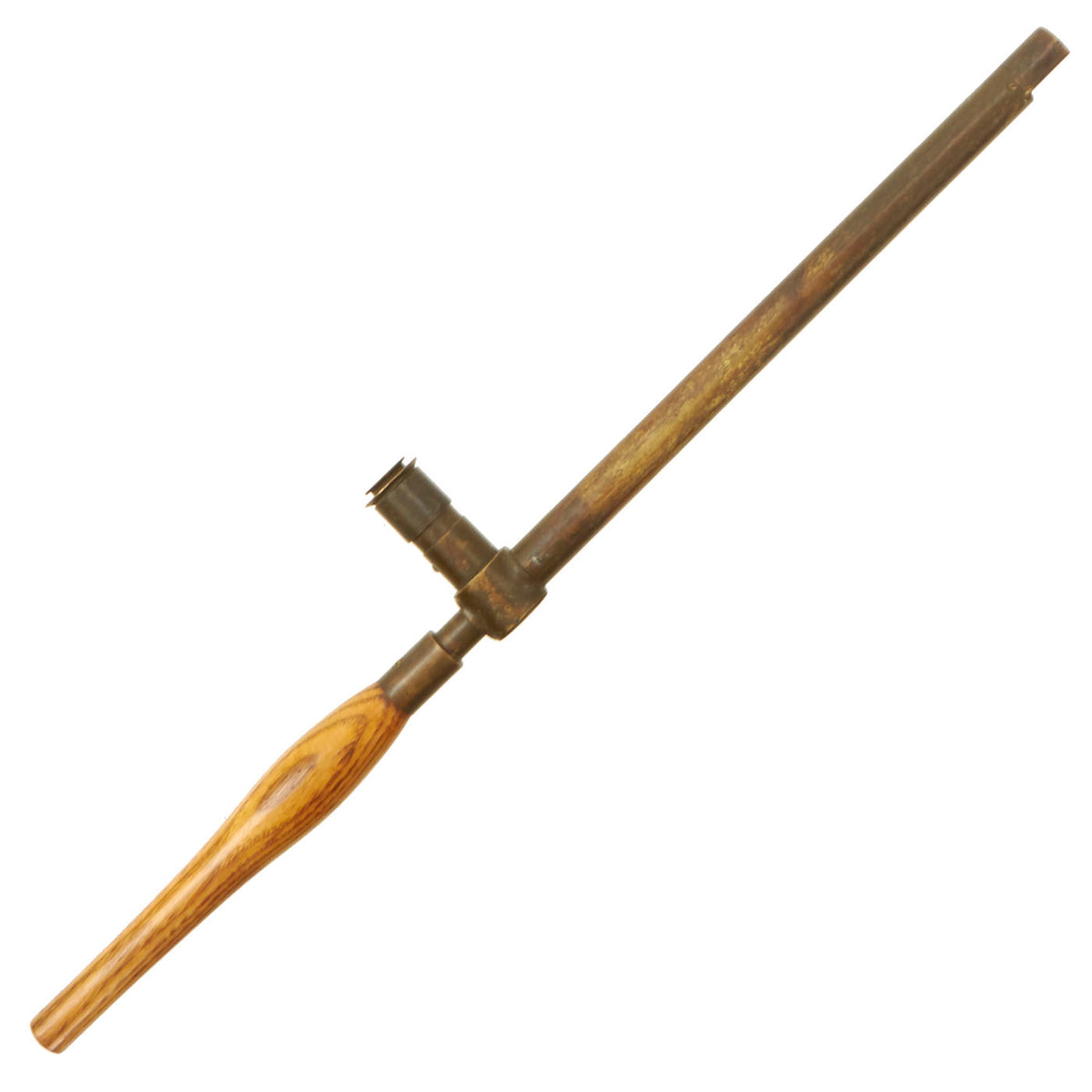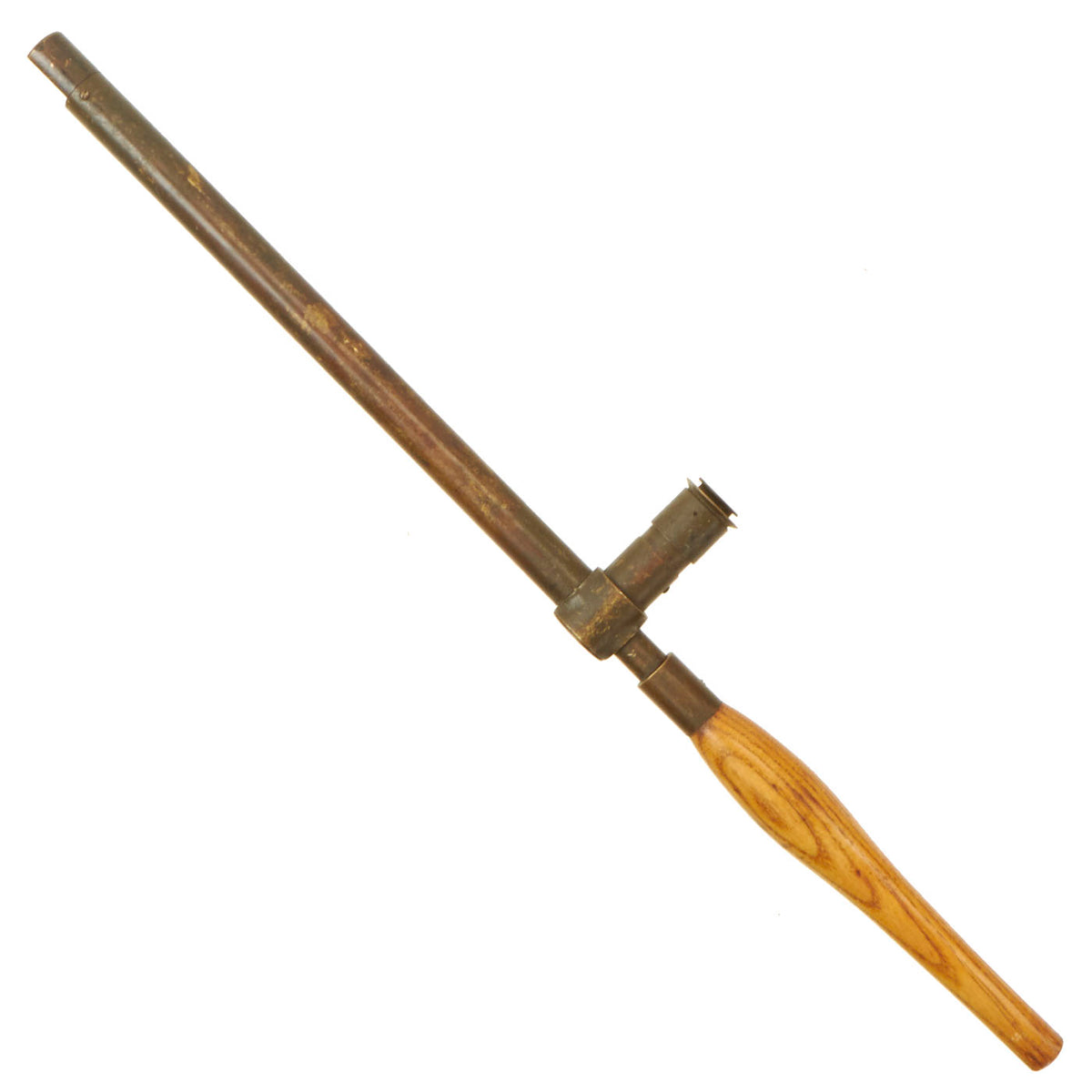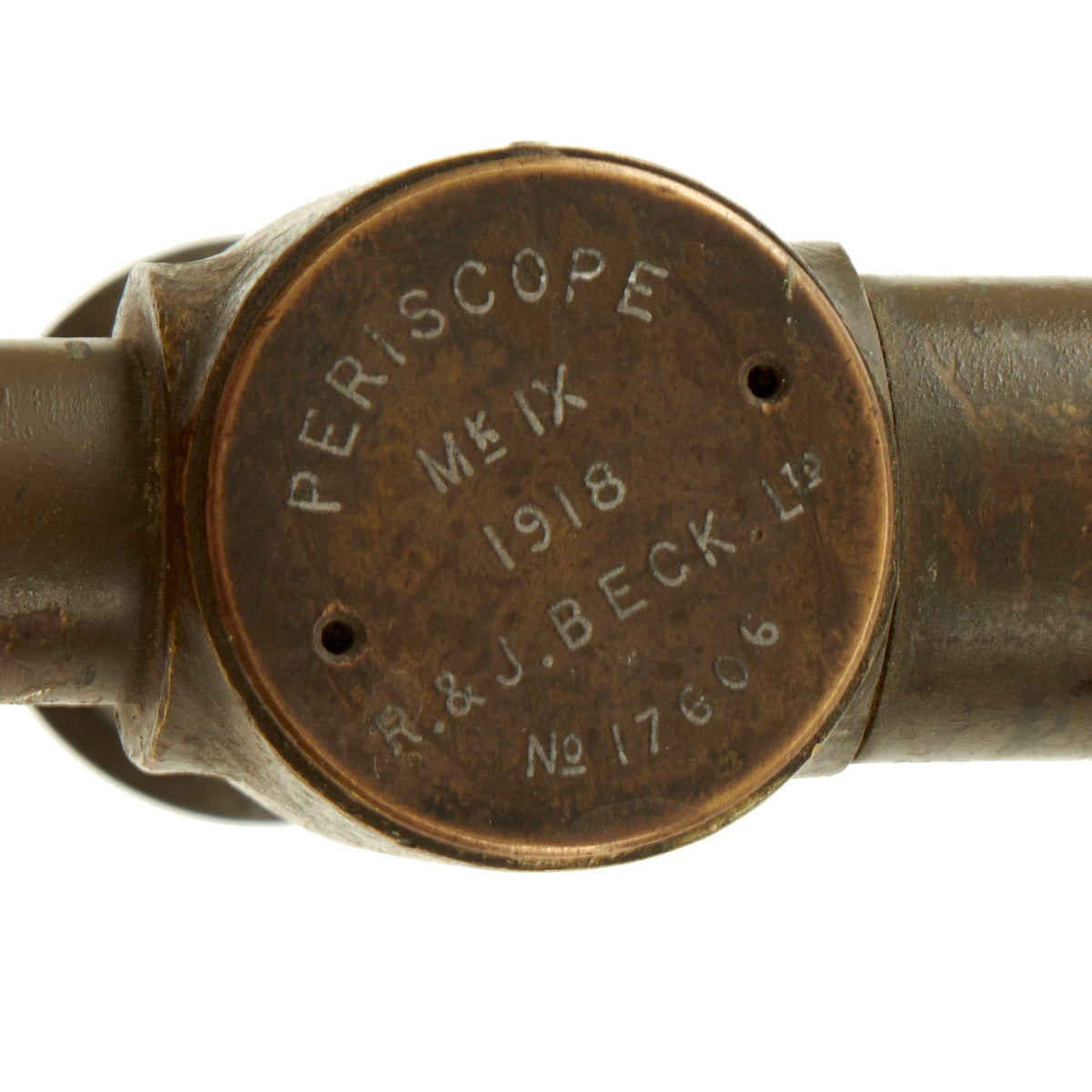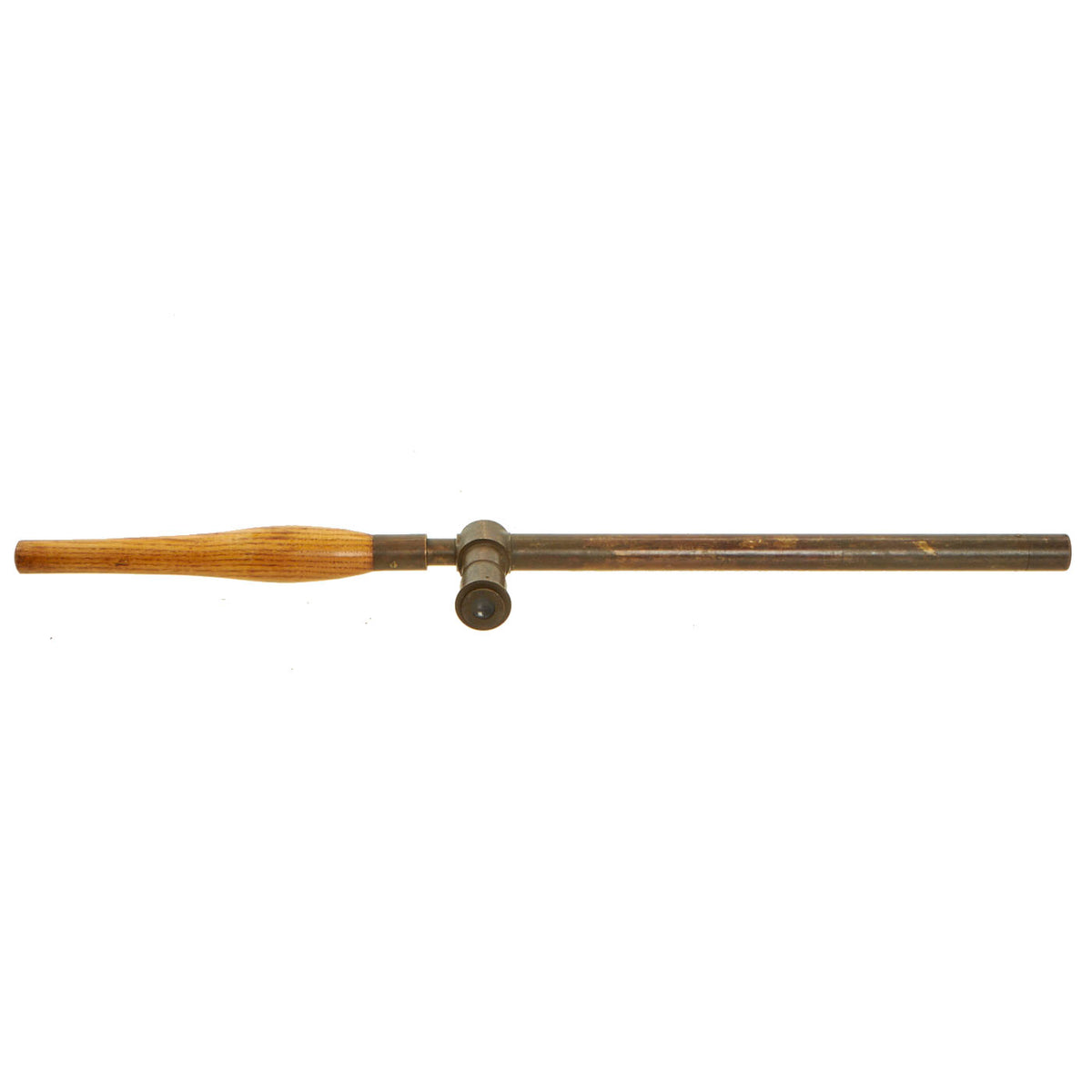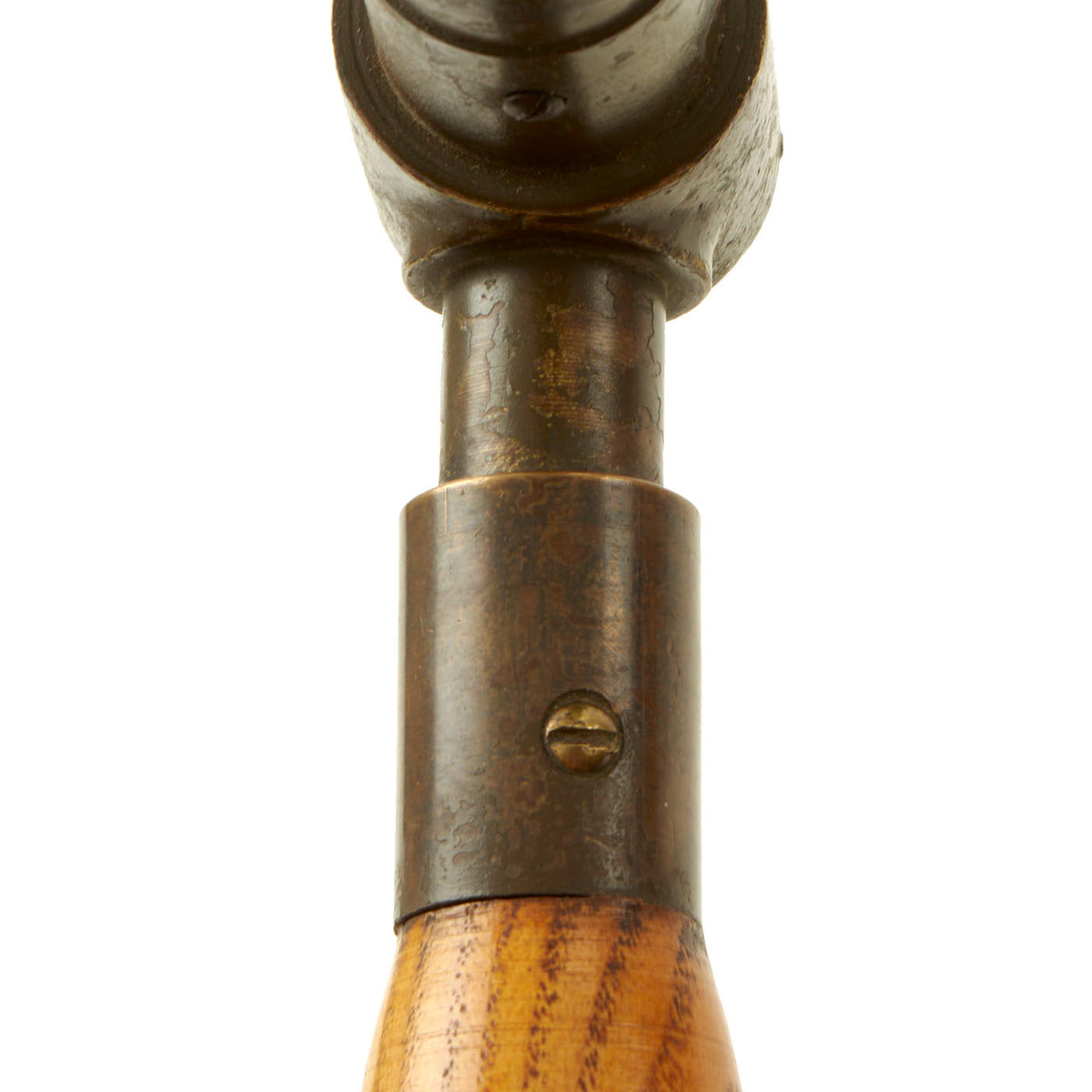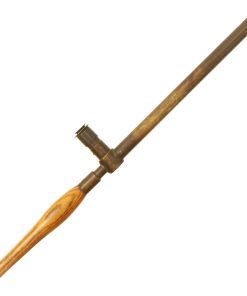Original British WWI Mk IX Trench Periscope By R. & J. Beck Ltd. Dated 1918 Original Items
$ 395,00 $ 118,50
Original Item: Only One Available. A periscope is an instrument for observation over, around or through an object, obstacle or condition that prevents direct line-of-sight observation from an observer’s current position.
In its simplest form, it consists of an outer case with mirrors at each end set parallel to each other at a 45° angle. This form of periscope, with the addition of two simple lenses, served for observation purposes in the trenches during World War I. Military personnel also use periscopes in some gun turrets and in armored vehicles.
More complex periscopes using prisms or advanced fiber optics instead of mirrors and providing magnification operate on submarines and in various fields of science. The overall design of the classical submarine periscope is very simple: two telescopes pointed into each other. If the two telescopes have different individual magnification, the difference between them causes an overall magnification or reduction.
This is a fine original example complete with a maker’s plate and much of the original Green paint present on the brass parts. The data plate is located on the opposite side of the view port and the following information:
PERISCOPE
Mk IX
1918
R. & J. Beck Ltd.
No 17606
Brothers Richard and Joseph Beck formed the optical manufacturing firm of R and J Beck in 1843, based in London. The firm is remembered for helping to raise the status of the use of microscopes within scientific research but clearly in WWI this was extended to help saving lives on the battlefield.
The instrument measures 23″ overall and has a removable varnished turned beech wood handle with a brass screw attachment point. The brass eyepiece has a focus ring on it and the optics are in good clear condition and all function as intended. The brass body of the periscope fortunately still carries most of its original olive drab paint. These instruments are often found stripped and the brass body polished to a high shine but this one has fortunately avoided this fate. The Mk IX are generally regarded as intended for use by Officers and they provided the potentially lifesaving function by enabling a clear view over the parapet of the trench into ‘no man’s land’ without risking life from the German sharpshooters in the opposing trench.
A fine example of a crucial instrument used during WW1! Comes ready for display.
Fast Shipping with Professional Packaging
Thanks to our longstanding association with UPS FedEx DHL, and other major international carriers, we are able to provide a range of shipping options. Our warehouse staff is expertly trained and will wrap your products according to our exact and precise specifications. Prior to shipping, your goods will be thoroughly examined and securely secured. We ship to thousands clients each day across multiple countries. This shows how we're dedicated to be the largest retailer on the internet. Warehouses and distribution centres can be located throughout Europe as well as the USA.
Note: Orders with more than one item will be assigned a processing date depending on the item.
Before shipping before shipping, we'll conduct a thorough inspection of the items you have ordered. Today, the majority of orders will be delivered within 48 hours. The delivery time will be between 3-7 days.
Returns
The stock is dynamic and we cannot completely manage it because multiple stakeholders are involved, including our factory and warehouse. So the actual stock may alter at any time. It's possible that you may not receive your order once the order has been made.
Our policy is valid for a period of 30 days. If you don't receive the product within 30 days, we are not able to issue a refund or an exchange.
You can only return an item if it is unused and in the same state as the day you received it. You must have the item in its original packaging.
Related products
Uncategorized
Uncategorized
Uncategorized
Uncategorized
Uncategorized
Australian WWII Owen MK1 Machine Carbine SMG Custom Fabricated Replica with Sling Original Items
Uncategorized
Uncategorized
Uncategorized
Uncategorized
Uncategorized
Uncategorized
Uncategorized
Angolan Rebel 1970s era 60mm Inert Display Mortar from Angolan Civil War Original Items
Uncategorized
Uncategorized
Uncategorized
Uncategorized
Uncategorized
Band of Brothers ORIGINAL GERMAN WWII Le. F.H. 18 10.5cm ARTILLERY PIECE Original Items
Uncategorized
Armoured Fighting Vehicles of the World: AFVs of World War One (Hardcover Book) New Made Items
Uncategorized
